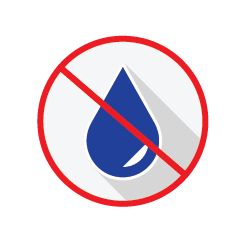4 Ways You Can Prevent Roof Leaks
 The SECRET to preventing roof leaks is simple. LOOK at the system and do it often. Here is the when, why, where, and who should look at your roof system.
The SECRET to preventing roof leaks is simple. LOOK at the system and do it often. Here is the when, why, where, and who should look at your roof system.
WHEN SHOULD YOU LOOK?AT A MINIMUM, BI-ANNUALLY.
WEATHER EVENT. After any severe storm, your manufacturer’s warranty may require you to have the roof evaluated. Neglecting minor damage on your roof membrane could cause leaks that may void your warranty.
MANUFACTURES WARRANTY. Most major manufacturers require a minimum yearly documented inspection by a certified roofing professional.
WHY SHOULD YOU LOOK?
COSTS, AVOID LITIGATION, & REPUTATION
SAVE MONEY. It is less expensive to fix small problems before they become significant, costly problems and emergency leaks could temporarily impair business operations.
DAMAGES THE BUILDINGS ENVELOPE. When roofs leak, it is common for the leaks to go undetected and cause severe damage to the system and building envelope. The building envelope includes all the components that make up the shell or skin of the building separating the exterior of the building from the interior.
OPERATIONS DOWNTIME. In severe cases, the leak may close a business’s operations costing a significant amount of revenue and customer dissatisfaction.
DAMAGED PRODUCTS. Retail operations or businesses with inventory are most vulnerable to damage from water intrusion. Many times, leaks occurring in unfrequented inventory storage areas go unnoticed quietly destroying merchandise.
UPSET TENANTS. It is a daily grind to find tenants and keep them. Leaks might give tenants some leverage to request a reduction in leasing costs or even break the lease.
WHERE SHOULD YOU LOOK FOR LEAKS?
FLASHINGS, PENETRATIONS, & TERMINATION.
PONDING WATER. The roof’s drainage system must allow water to flow freely away from the building if not water begins to pond. Ponding occurs when the drainage system is experiencing blockage from debris or damage. Ponding water is a common source of roof leaks because the additional weight adds a significant strain on the roofing system.
FLASHING. Another common source of water infiltration is the exterior edge of the roofs or interior parapet walls. The flashings at those areas are prone to deterioration from poor installation or damage.
PENETRATIONS. Items like HVAC units, conduits, vents, drains, and pipes should undergo regular inspections to ensure they remain watertight.
MEMBRANE DAMAGE. Look for any splits, cracks, blisters, shrinkage, or punctures in the membrane. They can expose the roof’s insulation to moisture. Built-Up (BUR) systems leaks typically occur at flashing details and anywhere the membrane terminates or interrupts.
With Single-ply, if you do not have proper seams you don’t have much of a roof system. If the seems of any Single-ply System is peeling or damaged have it evaluated by a professional roofer. Look for punctures in membrane especially after heavy traffic or storms. Shrinkage or pulling of the flashing is another indication of membrane damage.
WHO SHOULD DO THE INSPECTION?RAMCON Roofing
Roof Asset Management is a process that begins with a thorough understanding of the installed roofing system. The only way to know if any damage or deterioration will not lead to leaks is to have the system evaluated by a professional roofer. It takes an experienced professional to conduct a thorough roof evaluation.
